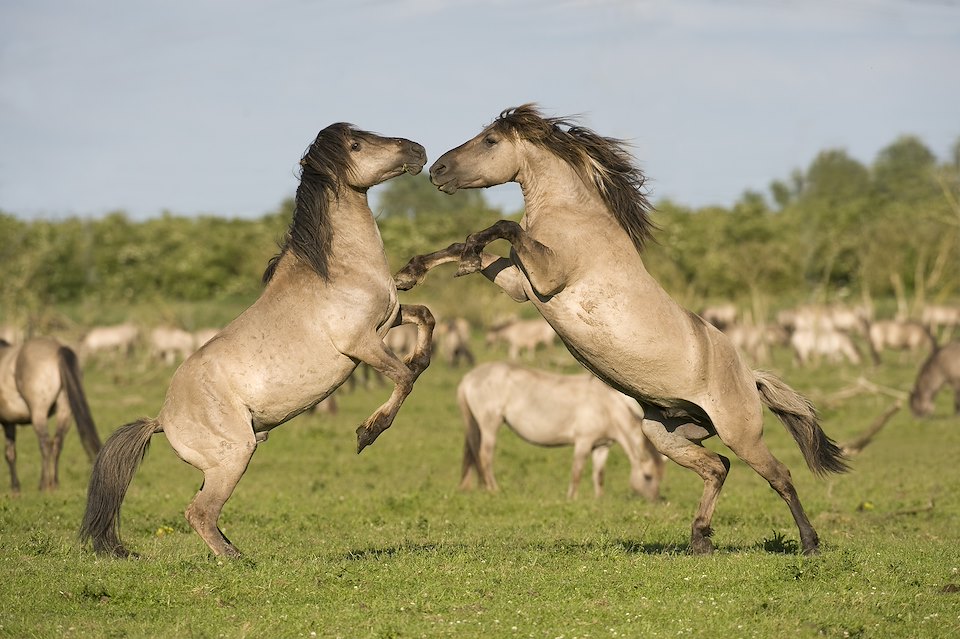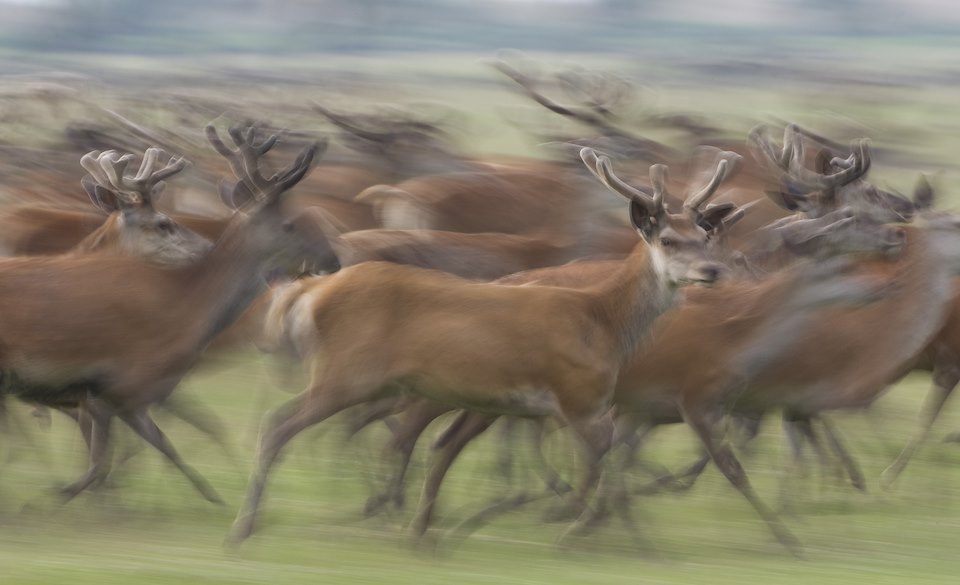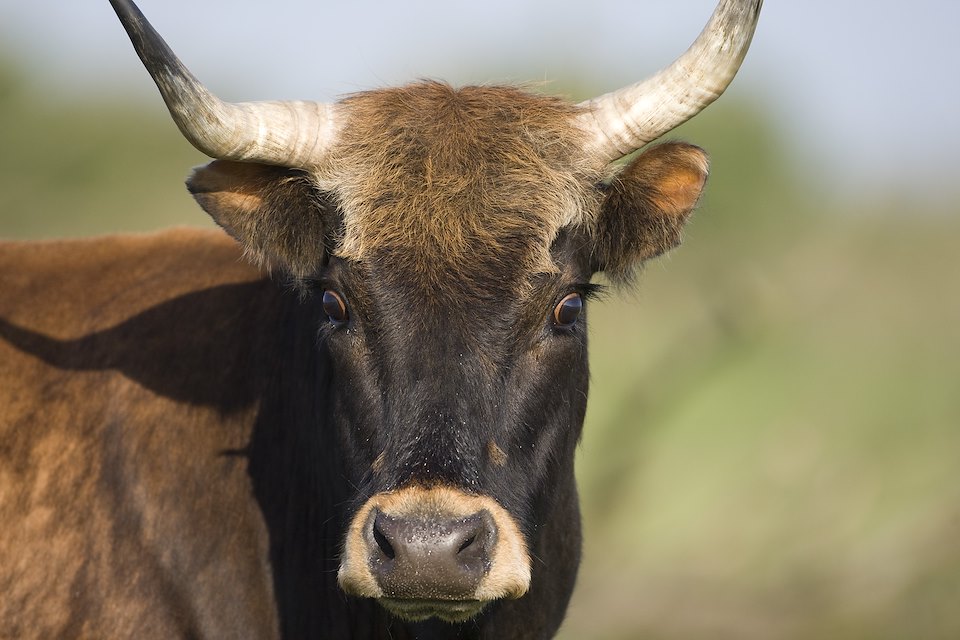Rewilding Gone Wrong? Lessons from the Oostvaardersplassen
Some people call the Oostvaardersplassen a rewilding experiment gone wrong. But if that is the case, what lessons can we learn from this controversial Dutch nature reserve as we try to map the relatively uncharted waters of letting nature take the lead, in our endeavours to restore wildness to Europe’s landscapes?

I visited the Oostvaardersplassen as part of a week-long wood pasture study tour in 2016. Wood pasture is a little-known ecosystem which, as the name suggests, is neither woodland or pasture and yet, at the same time, both. I had previously visited Geltsdale in northeast Cumbria, where wildflower meadows that hum with insects are woven amongst gnarled old birch trees, rowans, oak and alder. Old breed cattle graze this magical landscape that is more reminiscent of a fairytale than a farm.
Frans Vera is a Dutch ecologist who has questioned the received wisdom that in the absence of humans, northwest Europe would have been dominated by dense, closed canopy forest. Instead, he poses the idea that a suite of grazing animals would have engineered a much more dynamic patchwork of woodland and pasture. The Oostvaardersplassen was Vera’s chance to test his theory.
In the 1960s this land was reclaimed from the sea for industrial development, but the oil crisis of 1973 meant that the planned ranks of factories never materialised. Along with colleagues, Vera moved to get the area protected. He watched how greylag geese re-engineered the emerging reed-beds into shallow ponds, which other birds quickly occupied. The idea of using grazers to create diversity was born.

Some people call the Oostvaardersplassen a rewilding experiment gone wrong
A 55 square kilometre reserve enclosed by huge dykes, just a stone’s throw from Amsterdam, became one of Europe’s first rewilding experiments. Inspired by the geese, other grazers were brought onto the reserve to see how their dynamic interactions would affect the landscape. Wild Konik horses were introduced from eastern Europe, along with heck cattle and red deer. Once all the pieces were in place, ecologists sat back and watched.
On a sunny day in October, our small group walked out from the visitor centre and entered a spectacular tower hide, affording a view across a vast marshy grassland dotted with dead trees. Scanning the landscape with my binoculars, I could see cattle and horses, and then I started to pick out the red deer, not single animals but huge herds. I was astounded by their numbers.



The plan for the Oostvaardersplassen was always one of non-intervention – allowing nature to run its course - which struck me as odd for a project whose foundation was based entirely on fencing to prevent animals migrating as they would do naturally. More worryingly, perhaps, these large herds of herbivores had no natural predators within the enclosure. By 2005, the hands-off approach was starting to beg questions as the harsh winter claimed the lives of 22% of the animals through starvation. Predictably, there was a huge public outcry and policymakers decided that in future, vulnerable animals should be shot.
This was not the first winter in which animals had starved, but it had never happened on this scale. Death is an essential ecological process and carrion a vital food source for scavengers. In 2006, the first pair of white-tailed eagles - formally extinct in the Netherlands - took up residence on the reserve and by the time of my visit in 2016, ten breeding pairs were prospering.

Scavengers like sea eagles are quick to capitalise on opportunities.
The starvation event of 2005 sparked questions about where the project was heading. Originally the reserve was to be joined to other habitats by a wildlife corridor enabling animals to migrate at will. A change in policy meant these plans were shelved, but nevertheless, Frans Vera maintained that despite their confinement, populations of grazers would eventually stabilise.
By the end of 2017, after a series of mild winters, numbers of grazing animals had reached more than 5,000. Instead of Vera’s vision of a dynamic wood pasture, many parts of the Oostvaardersplassen were becoming less diverse, with species of breeding birds on the decline. The severe winter of that year brought unprecedented challenges and 3,000 animals - 60% of the population - died; most were shot to prevent them starving. The public backlash was predictable and around the clock, people were throwing bales of hay over the fences to save desperate animals.

In 2018 the decision was taken to cap the number of grazers at 1,100, meaning 1,800 deer had to be destroyed. Horses were transported to other reserves in Belarus and Spain, and ailing cattle are now fed hay in the winter, where required.
Frans Vera, no longer part of the decision-making team for the Oostvaardersplassen, still insists that the experiment should have been allowed to run its course. He claimed that mass starvation events are normal, and that it is food availability that regulates populations of grazers, rather than predator numbers. Vera draws comparisons with widespread starvation in places like the Serengeti, but it seems to me that comparing a dry tropical climate routinely prone to drought, with animals running out of food in temperate Europe due to their inability to migrate beyond a fence is, at best, unfair.
In the harsh winter of 2017, 3,000 animals died.
In the harsh winter of 2017, 3,000 animals died.
There are other areas from which we can draw valuable rewilding lessons. We have learned from Yellowstone in the USA how important wolves are in changing the behaviour of deer and elk. Riparian areas, no longer safe to graze due to the risk of predation, have been able to recover into rich biodiverse habitats. We have also learned from the work of the Zimbabwean ecologist, Allan Savory, that in the absence of predators, grazers will overgraze. It is not simply the act of predation, but the way grazers bunch together and keep moving in the presence of predators. In the British uplands we tend to allow high levels of persistent grazing pressure, primarily by sheep and deer, with the inevitable devastation on local biodiversity. Savory has demonstrated, in both temperate and dry climates, that land grazed for short periods and then left to rest, is the best way to recover soil health and, therefore, biodiversity.
For me this highlights a key question: what is the role of humans in controlling the movement and numbers of grazing and browsing ungulates in the absence of natural predators?
During our week in the Netherlands, as well as the Oostvaardersplassen, we visited the Borkener Paradies, just over the border in Germany. This nature reserve, nestled in the oxbow of a river, is a beautiful patchwork of dense woodland with pockets of pasture. Small numbers of horses and cattle lazily graze the reserve. At the edge of each patch of woodland there is a thick rim of blackthorn; the woodland is marching, very slowly, into the pasture. Young oak trees grow up through the blackthorn, protected from the mouths of browsing animals. Meanwhile, within the woods, horses will occasionally ring-bark a mature tree, killing it and allowing in light and a new patch of pasture to emerge. This almost imperceptible yet dynamic ebb and flow quietly shapes this landscape.

I like Frans Vera’s idea that wood pasture is what northwest Europe looked like in the past. I feel inspired in places like Geltsdale or the patchwork habitat of the Borkener Paradies, perhaps because they are vibrant and full of life; it is as if you can feel nature breathe in and out here. But these places seem a far cry from the Oostvaardersplassen.
The original plan for a wildlife corridor from the Oostvaardersplassen to other habitats is being explored once more, so it remains a remarkably interesting project to watch. However, there are other places to look to. Perhaps most interesting for me in our week in the Netherlands was the Millingerwaard on the river Waal. Here, along with Konik horses, Galloway cattle roam entirely free. They are not designated ‘wild’, but intervention is minimal. They are gathered each year to check their health and to take hair samples from the calves to track their parentage. Some older animals are killed, and the meat is sold for food. We learn how the cattle have formed two matriarchal herds, and that it is essential not to kill these matriarchs, because they hold the knowledge of how to lead the herd to safety when the river floods. But perhaps most remarkable of all, especially in the light of animals starving in the Oostvaardersplassen, is that the cattle leave an area of land ungrazed through most of the year, only returning to it in the winter.

This almost imperceptible yet dynamic ebb and flow quietly shapes this landscape.
Personally, I am enamoured by the idea of animals being able to express their innate behaviour and lead a wild life in a wild environment. I would rather eat meat raised like this, in a vibrant, ever-adapting ecosystem, than from intensive farming. This idea is gaining traction here in the UK with inspiring projects like Knepp Wildland in West Sussex. The Oostvaardersplassen was a huge inspiration for Knepp at its inception but unlike the Dutch experiment, the sale of meat at Knepp from their free-roaming grazers, is an integral aspect of rewilding this corner of the British landscape.
The role of humans in rewilding depends very much on whether animals are fenced or able to move freely. It depends whether natural predators are present to change grazers’ behaviour or not. It would be churlish to criticize what was a ground-breaking project at the Oostvaardersplassen; in pushing at new boundaries mistakes are inevitable and we cannot allow ourselves to be paralysed by the fear of failure. We must however, learn from those mistakes, which in this case, surely point to a pathway prescribed by nature itself, and not from our pre-conceived ideals.

